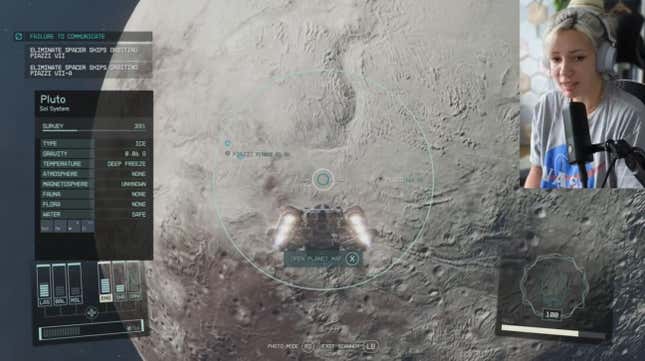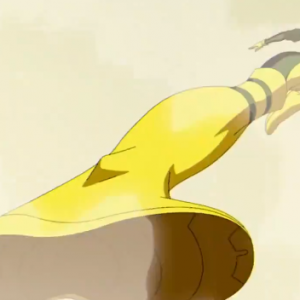Pluto isn’t a planet. That really shouldn’t be a controversial statement any more, but it regains new contentiousness with the release of epic space RPG, Starfield. Developer and streamer Alanah Pearce wanted to find out if Bethesda’s epic space RPG really does require fast travel for all interplanetary travel, by setting off on the seven hour trip from Earth to the dwarf planet.
Starfield intends players to use fast travel to move between planets and solar systems. Disappointing many, who had hoped for a more natural ability to fly from orb to orb, it was widely speculated that the game was instead beaming players into bordered skyboxes within a solar system, with the uninhabited planets just decorations on the walls. Brave explorer, podcaster, and Santo Monica Studios writer, Alanah Pearce, decided to find out the truth.

Pearce’s plan was to fly within the familiar trails of the Milky Way to discover if those extra worlds could be reached under a player’s own space-steam. To do this, the plan was to point toward a location, then leave the game running while she slept. However, Pearce’s first problem was where to head. Initially trying to aim for Earth, it turned out that the game’s ultra-realistic planetary orbits would have made it unrealistic to accurately aim before heading to bed. Instead, after much deliberation, the decision was made to point the ship to the right of Pluto.
Read More: 17 Things I Wish I Knew Before I Started Playing Starfield
It turns out it’s not that simple. It’s never that simple. Every time Pearce’s Xbox controller fell asleep, the game paused, meaning there were stretches of the night where no progress was made until the streamer woke up to hit A, then went back to sleep.
On waking seven hours later, what Pearce unequivocally proved is that the game isn’t using skyboxes. The solar systems depicted in the enormous space map are for real, and like the real thing, mostly made of terrifyingly vast stretches of absolutely nothing. And now she was 47 kilometers from the dwarf body.
By this point, the textures were heavily blurred, suggesting Bethesda had not intended anyone to do this. Rather confirming that, on actually reaching the non-planet, Pearce flew straight through the skin of Pluto’s surface, on some level going “inside” it, whereupon the trans-Neptunian object became invisible showing the rest of space around her ship.
Getting out the other side proved somewhat trickier. Because, even though Pluto is endlessly demeaned for its diminutive size, it still has a diameter of 2,376km. And travelling at these subspace speeds meant that would take hours itself. So, you know, Alanah Pearce went back to bed.
After another five hours, the ship was outside of the planet again. Astonishingly, in the process, Pearce reports that she was so tired that she’d fainted on her return to bed and smacked her head. But it was for Science.







the1.21updateofficialnameis..._minecraftmonthly-youtube-googlechrome4_26_20242_39_36pm-300x300.png)
















